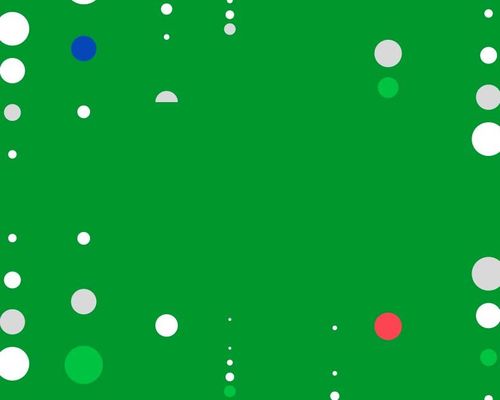2008 ITEA 2 Symposium and ARTEMIS & ITEA Co-summit were a success
Co-operation and synergy marks out road ahead for European software research
The need for close co-operation and synergy between all stakeholders in the European software industry and how this is being achieved was the major focus of a three-day event in Rotterdam on ‘European competitiveness and well-being through ICT-based innovation’. The event from 21 to 23 October brought together the ITEA 2 EUREKA Cluster for software-intensive systems and services and ARTEMISIA the Association for R&D actors in Advanced Research & Technology for EMbedded Intelligence and Systems– the EU public-private partnership.
More than 600 R&D actors and policy makers representing industry, academia and Public Authorities from all over Europe were registered for the three days of discussions on the future of this key industrial sector and the accompanying exhibition. The three-part event consisting of the ITEA 2 ‘community day’, the ARTEMISIA Focus Sessions, ARTEMISIA General Assembly and a joint ARTEMIS & ITEA Co-summit was supported by the Dutch Ministry of Economic Affairs, Philips, NXP and EUREKA.
The ARTEMIS & ITEA Co-summit was opened by Renée Bergkamp, Director General for Enterprise & Innovation, speaking on behalf of Maria van der Hoeven, Dutch Minister for Economic Affairs. She highlighted the important role that intelligent systems and services play in social and economic terms worldwide and particularly in the Netherlands. “ITEA and ITEA 2 have set standards for co-operation,” she said. “ARTEMIS complements them and brings an even wider range of possibilities – enabling us to attract talent from Europe and abroad. However we need to translate research into results and pool our resources.”
Keynote presentations included an overview of EUREKA from High Level Group Chairman Manuel Nunes da Ponte, ‘Mega trends 2012’ from Oliver Christ, Director SAP Research Switzerland and ‘Innovations to improve the quality of people’s lives’ from Rick Harwig, Chief Technology Officer of Royal Philips Electronics. A series of parallel sessions then covered: Creative Industries – where design meets technology; Industry-as-laboratory – a research format for high-tech industry?; Open Source – a solution for embedded systems software?; Web of Objects; and Health and Wellbeing.
Major driver for European innovation
Software-intensive systems & services and embedded systems are major drivers of innovation in Europe’s most competitive industries – such as automotive, aerospace, communications, healthcare and consumer electronics – and a vital growth engine for Europe. The recent ‘Aho Report’ on high-tech research in the EU under the chairmanship of former Finnish Prime Minister Esko Aho emphasised this importance.
Viviane Reding, EU Commissioner for Information Society and Media, called the Aho report a wake-up call for innovation in Europe. In a video presentation to the Rotterdam event, she insisted that, “without daring and risk taking, no breakthroughs are possible. The challenges to the industry are considerable but the results are worthwhile.”
ITEA 2 Chairman Prof. Rudolf Haggenmüller highlighted the progress that ITEA has already achieved in areas such as: high definition TV, now ready for deployment; the AUTOSAR software standard for the automotive industry; and software development for product lines rather than for just products. He also pointed to two key emerging technologies: the so-called ‘Web of Objects’ and service innovation. Nevertheless, he saw several grand challenges for the European industry in the next ten years that require a broader eco system to tackle, for example: the move from a product-oriented to a service-oriented economy and sustainability.
Newly-elected ARTEMISIA President Dr Klaus Grimm, responsible for software development at automotive Daimler in Germany, emphasised the strong position that Europe holds in the global software market but noted that the European embedded software industry is still too fragmented. “We can only face the challenges in a combined approach with all the industries concerned,” he insisted. “The objective of ARTEMIS is to combine European excellence with marketable products. We need self-sustaining eco systems and programmes to stimulate this and achieve the required breakthroughs."
Mapping the way ahead
Both ITEA 2 and ARTEMIS looked to the future of software development in Europe. ITEA 2 presented the third edition of its Roadmap covering 2008 to 2014. This exceptional document provides an innovative global vision of the future for the entire software community. It also proves the potential of ITEA 2 to contribute significantly to European industrial competitiveness over the coming six to seven years. The Roadmap was produced by a group of 16 specialists and changed from the previous technology/domain approach to a series of ‘me’/‘group’/‘society’ viewpoints.
“The current information technology era is coming to an end and being replaced,” said Jean-Luc Dormoy of CEA DRT. “We are reaching the limit of Moore’s law, we need to move from large systems to systems of systems, software requires brains and methods that we do not necessarily have, and we are facing challenges without precedent, so we now need some breakthroughs.”
ARTEMESIA presented its Multi Annual Strategic Programme (MASP) and Research Agenda for 2009, together with its 2009 Annual Work Programme. The MASP is due to be approved by the end of November, and will serve as the basis for the second ARTEMIS call.
“The basic vision of the MASP has not changed,” explained Eric Schutz of STMicroelectronics, who presented the MASP with Laila Gide of Thales, his co-chair of the ARTEMIS strategic research agenda (SRA) working group. “However, there is now a new impetus on building self-sustaining innovating eco systems for European leadership in embedded systems.” A ‘summer camp’ involving nearly 100 experts from across Europe confirmed the targeting of the eight sub programmes in the SRA. Two novelties for 2009 are Centres of Innovation Excellence for eco systems and Tool Platforms.
2008 ITEA Achievement Award
The 2008 ITEA Achievement Awards went to the LOMS, MARTES and Trust4All projects. The ITEA 2 Board presents these annual awards for high-level technical contributions based on true European collaboration that provide significant results.
The Gold award went to LOMS mobile services creation project, which has made it possible to combine service creativity with powerful features of a well-controlled service environment. The Silver award went to MARTES, which developed model-based methodology addressing business risks, new systems domains and increasing complexity to boost productivity of embedded-systems development. The Bronze award went to Trust4All, which delivered a solid, flexible and trustworthy architecture for embedded systems in several domains. The results have already been exploited in several new product concepts and services.
An exceptional one-off special appreciation award went to the ANSO project at the request of ITEA 2 Vice-Chairman Gérard Roucairol for its contribution to the realisation of the Web of Objects.
Major exhibition
The ITEA 2 exhibition again served as a major focal point for the event, showcasing results and achievements with demonstrations. It featured 48 ITEA/ITEA 2 projects representing 6,860 person-years of effort and accounting for €734 million, 3 EU IST projects and a special section featuring multiple European healthcare projects including demonstrations from the Robert Bosch Partnership for the Heart project and Philips Healthcare. ITEA exhibition awards for best presentation of results in the exhibition went to SmartTouch (Gold), LOMS (Silver) and CAM4HOME (Bronze).
The ARTEMISIA stand provided an initial view of the Multi Annual Strategic Programme for the next five years. It also provided a performance of the guitar robot developed by teamDARE of the Netherlands that won the 2008 ARTEMIS Orchestra Contest. In addition, there were stands from EUREKA, and eight European competitiveness clusters: Pictor (BE); Safetrans (DE); Point-one (NL); AESE, Cap Digital, Minalogic and System@tic (FR); and Prometeo (ES).
For more information please see:
The ITEA 2 Symposium 2008 website
The ITEA 2 Symposium 2008 press releases



